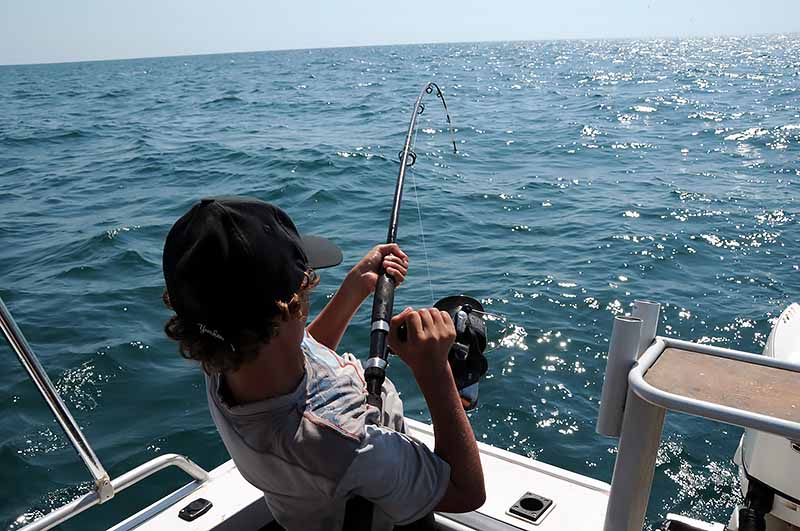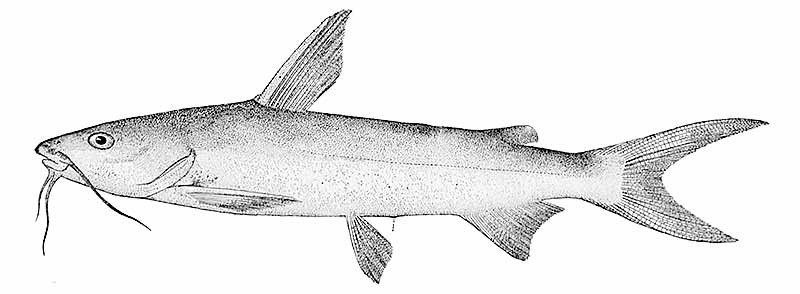
Saltwater catfish are a pain to deal with because they are so good at stealing your bait. The joke, however, is on them because you might find them to be one of the best fish to eat. How big do saltwater catfish get? Most species range from 9-12 pounds at full maturity, so not as big as freshwater catfish. While there are several types of saltwater catfish there are only two main Florida catfish species – hardhead and gafftop catfish.
What Are Saltwater Catfish?
Are there saltwater catfish? There are a few species of catfish that live in saltwater. Hardheads and sail catfish are perhaps two of the most widely populated saltwater catfish along the coastal waters of Florida. They reside in both the Atlantic and more heavily in the Gulf of Mexico.
If you are wondering how big saltwater catfish get, they stay fairly small. The Hardhead catfish can grow to 28-30″ in length and about 12 pounds. Anything close to that would be considered a trophy catch. Most Florida catfish found in the shallows range in weight to three pounds. The Sail Catfish or gafftop catfish is slightly smaller when fully matured weighing around nine pounds. On average, expect most of the Florida catfish you catch to be under three pounds. In fact, both species are considered pest fish for anglers because they are very good at stealing your bait.
Hardhead or gafftop fishing is fairly easy. You can find saltwater catfish in both the shallows during the summer and in deeper water in the winter months throughout the Gulf Coast and the Gulf of Mexico. While the hardhead catfish is generally only a saltwater fish, the sail catfish, aptly named because of its taller dorsal fin, will sometime invade brackish lagoons, bays, and estuaries.
For those anglers who want to target snook, redfish, or spotted trout, you will have to battle the sailcat catfish and hardhead catfish as both will try to steal your bait. For most of you, that’s a negative, and it can be, but there is an upside. Ocean catfish make amazing cut bait. If you find that you are having to re-bait your hook or constantly unhook Florida catfish from your line, just use them as bait.

Hardhead Catfish
Can You Really Eat Saltwater Catfish?
A big question from anglers new to catfish saltwater fishing is “are saltwater catfish edible”? They are edible, though some people do not like their taste. You can, and you should expect a similar taste and texture as you find with freshwater catfish. Many people who catch saltwater catfish do not bother with eating them. They just throw them back. They have a bit of a negative image because they are not overly large, they are bony, and their dorsal spins can be toxic. They are actually excellent to eat.
If you cook them correctly, you end up with a solid, flakey fish that has a firm texture and that lovely catfish taste. They are not gamey or bad tasting. You do have to work cleaning them as they are very slimy. Their extra thick slime coat helps protect them from the saltwater but makes them slippery to hold. There is also the risk of getting “stung” by their dorsal rays, and pectoral rays, which can cause a toxic reaction.
For these reasons, many anglers prefer to target other fish, that are less work and easier to clean. Opportunity is in the eye of the beholder. The ocean catfish pretty much catch themselves. All you have to do is throw out your line, and they will attempt to steal your bait. If you have not tried them for lunch or dinner, do so. You may be pleasantly surprised at the quality of fish they are.
How To Clean and Prepare Saltwater Catfish
Catfish have very angled rib bones. So, you have to filet them a little differently than you would another type of fish.
Step 1: Bleed them, by cutting the gills. You can use an ice chest with water in it so that they bleed into the water. That kills the fish faster, and they bleed out quickly. The result is a cleaner filet.
Step 2: Once the fish is dead, you want to feel for the outline of the ribs. The bottom of the ribs will range from the pectoral fin to the anal fin. Cut along the spine and along the edge of the ribs down to the anal fin. This will help you remove those ribs when you filet the fish.
Step 3: At this stage, you can filet the catfish like you would another fish. The difference is that as you remove the meat (filet, you slide your knife along the rib cage where you made the cut to the anal fin. As you do, the meat will come away from the ribs, and you will end up with nicer filets. Hardhead and sailcat catfish do not have a lot of meat, so fileting in this way helps to produce the most meat.
Saltwater Cat Fishing Tips
- What bait do you use for saltwater catfish? – Catfish hunt by smell, so something stinky is always a good choice. Oily cut bait is one of the best baits to use.
- How to safely catch saltwater catfish? – Saltwater catfish have three spines that can produce a toxin. Those are the first dorsal ray, and the two thickest spines on the pectoral fins. To safely catch catfish, bring them to the boat or on shore with a net. The net helps reduce them flopping around, which can cause you to get stung easily. Put them directly into the cooler and then bleed them.
- What techniques work best for saltwater catfish? – You can target catfish in shallow water and along structures with cut bait and hook. You can also chum them in the same situations and then target them with a hook and bait. Chumming helps cause the catfish to congregate in one area where you can then target them with your hook.
Why Do People Not Like Ocean Catfish?
There are two main reasons why anglers do not like ocean catfish. The first is that they steal your bait while you are fishing for other fish. The second is that they are a little harder to clean. Some anglers will tell you that ocean catfish are not good eating and that is very debatable.
Are saltwater catfish poisonous? Another reason people do not like ocean catfish is that their spines can cause a toxic reaction. By learning how to handle them safely, you can avoid much of the risk. The flesh is not poisonous to eat.
